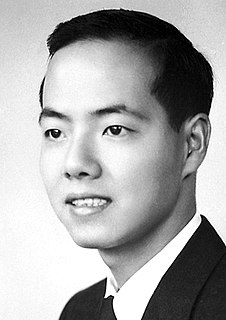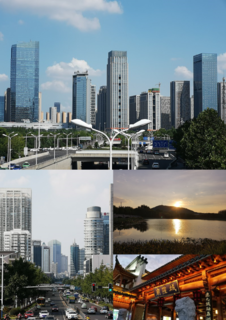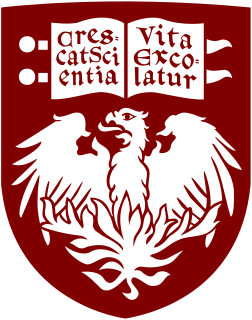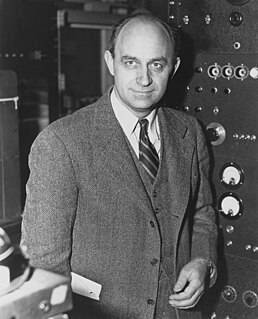
Brookhaven National Laboratory (BNL) is a United States Department of Energy national laboratory located in Upton, New York, on Long Island, and was formally established in 1947 at the site of Camp Upton, a former U.S. Army base. Its name stems from its location within the Town of Brookhaven, approximately 60 miles east of New York City.

National Tsing Hua University is a research university located in Hsinchu City, Taiwan, R.O.C.

Samuel Chao Chung Ting is a Chinese-American physicist who received the Nobel Prize in 1976, with Burton Richter, for discovering the subatomic J/ψ particle. He is the principal investigator for the international $1.5 billion Alpha Magnetic Spectrometer experiment which was installed on the International Space Station on 19 May 2011.

Tsung-Dao Lee is a Chinese-American physicist, known for his work on parity violation, the Lee Model, particle physics, relativistic heavy ion (RHIC) physics, nontopological solitons and soliton stars. He holds the rank of University Professor Emeritus at Columbia University, where he has taught since 1953 and from which he retired in 2012.

Andrew Chi-Chih Yao is a Chinese computer scientist and computational theorist. He is currently a Professor and the Dean of Institute for Interdisciplinary Information Sciences (IIIS) at Tsinghua University. Yao used the minimax theorem to prove what is now known as Yao's Principle.
Robert Laurence Mills was a physicist, specializing in quantum field theory, the theory of alloys, and many-body theory. While sharing an office at Brookhaven National Laboratory, in 1954, Chen Ning Yang and Mills proposed a tensor equation for what are now called Yang–Mills fields :

Burton Richter was an American physicist. He led the Stanford Linear Accelerator Center (SLAC) team which co-discovered the J/ψ meson in 1974, alongside the Brookhaven National Laboratory (BNL) team led by Samuel Ting for which they won Nobel Prize for Physics in 1976. This discovery was part of the so-called November Revolution of particle physics. He was the SLAC director from 1984 to 1999.

James Watson Cronin was an American particle physicist.

David Jonathan Gross is an American theoretical physicist and string theorist. Along with Frank Wilczek and David Politzer, he was awarded the 2004 Nobel Prize in Physics for their discovery of asymptotic freedom. David Gross is the Chancellor’s Chair Professor of Theoretical Physics at the Kavli Institute for Theoretical Physics of the University of California, Santa Barbara, and was formerly the KITP director and holder of their Frederick W. Gluck Chair in Theoretical Physics. He is also a faculty member in the UC Santa Barbara Physics Department and is currently affiliated with the Institute for Quantum Studies at Chapman University in California. He is a foreign member of the Chinese Academy of Sciences.

Raymond "Ray" Davis Jr. was an American chemist and physicist. He is best known as the leader of the Homestake experiment in the 1960s-1980s, which was the first experiment to detect neutrinos emitted from the Sun; for this he shared the 2002 Nobel Prize in Physics.

Maurice Goldhaber was an Austrian-born American physicist, who in 1957 established that neutrinos have negative helicity.
Peter van Nieuwenhuizen is a Dutch physicist. He is now a distinguished Professor at Stony Brook University in the United States. Van Nieuwenhuizen is best known for his discovery of supergravity with Sergio Ferrara and Daniel Z. Freedman.
The Institute for Advanced Study, Tsinghua University is a research institute established in Beijing in 1997. Modelled after the Princeton-based Institute for Advanced Study, albeit in a university setting, it is engaged in theoretical studies in physics, computer science and biology. Its honorary director is the Nobel Laureate professor Chen Ning Yang, who has provided guidance and support to CASTU since its inception, and current director is professor Gu Binglin.
Alexander Borissowitsch Zamolodchikov is a Russian physicist, known for his contributions to condensed matter physics, two-dimensional conformal field theory, and string theory, and is currently the C.N. Yang/Wei Deng Endowed Chair of Physics at Stony Brook University.

Hu Ning was a Chinese theoretical physicist.

Ye Qisun, also named Ye Hongjuan (叶鸿眷), was a renowned Chinese physicist and one of the founders of modern physics in China.
Michael John Creutz is an American theoretical physicist at Brookhaven National Laboratory specializing in lattice gauge theory and computational physics.

Shoucheng Zhang was a Chinese-American physicist who was the JG Jackson and CJ Wood professor of physics at Stanford University. He was a condensed matter theorist known for his work on topological insulators, the quantum Hall effect, the quantum spin Hall effect, spintronics, and high-temperature superconductivity. According to the National Academy of Science:
He discovered a new state of matter called topological insulator in which electrons can conduct along the edge without dissipation, enabling a new generation of electronic devices with much lower power consumption. For this ground breaking work he received numerous international awards, including the Buckley Prize, the Dirac Medal and Prize, the Europhysics Prize, the Physics Frontiers Prize and the Benjamin Franklin Medal.
Dmitri E. Kharzeev is a theoretical physicist working on quantum field theory, nuclear physics, and condensed matter physics. He is a Distinguished Professor and Director of Center for Quantum Materials at Stony Brook University, and the Head of RIKEN-BNL Theory group at Brookhaven National Laboratory on Long Island, New York.
Sally Dawson is an American physicist who deals with theoretical elementary particle physics.






























